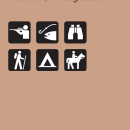Visit Us
We invite you to discover the 53,000+ acres of wetlands, sagebrush sagebrush
The western United States’ sagebrush country encompasses over 175 million acres of public and private lands. The sagebrush landscape provides many benefits to our rural economies and communities, and it serves as crucial habitat for a diversity of wildlife, including the iconic greater sage-grouse and over 350 other species.
Learn more about sagebrush meadows, and forests conserved on the Refuge which support a diverse assembly of plants and animals. The Refuge is a premier location for wildlife watching and photography, as well as hunting and fishing.
Visitors to Red Rock Lakes Refuge should be prepared to enjoy a remote wilderness setting. There are no paved roads. Visitors are advised to avoid accessing the Refuge during prolonged periods of rain or snowmelt. Some seasonal road conditions like mud or snow may require 4-wheel drive and high-clearance. There are no service stations with gasoline or tow trucks within at least 45 miles, so we ask travelers to plan accordingly.
The visitor center is closed November 1 - April 30
Location and Contact Information
About Us
Learn about the mission and history of Red Rock Lakes National Wildlife Refuge.


